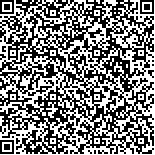| 本文已被:浏览 1567次 下载 1511次 |

码上扫一扫! |
|
|
| 针刺对自发性高血压大鼠血压的影响及其抗氧化应激机制研究 |
|
刘健1, 高婷2, 万基伟2, 李银虹2, 王敏3
|
|
1.天津中医药大学第一附属医院针灸研究所, 国家中医药管理局脑病针刺疗法重点研究室, 国家中医药管理局针刺量效关系三级实验室, 天津市针灸学重点实验室, 天津 300193;2.天津中医药大学, 天津 300193;3.天津中医药大学第一附属医院针灸部, 天津 300193
|
|
| 摘要: |
| [目的] 观察针刺人迎穴对自发性高血压大鼠(SHR)血压的影响以及体内活性氧(ROS)和一氧化氮(NO)/内皮型一氧化氮合酶(eNOS)的变化, 探讨针刺降压的抗氧化应激机制。[方法] 将SHR随机分为针刺组、模型组, 以京都Wistar大鼠(WKY)作为血压正常的对照组。针刺组取双侧人迎穴, 施以捻转手法, 捻转频率为每分钟120~160次, 行针1 min,每日针刺1次;模型组和正常组进行与针刺组相同时间、相同程度的捉抓。每天针刺前后测量收缩压和舒张压。针刺4周后, 取胸主动脉, 用酶联免疫法检测ROS含量, 硝酸还原酶法检测NO含量, 蛋白印迹法检测eNOS蛋白表达。[结果] 针刺4周后SHR收缩压和舒张压均较针刺前降低, 均低于模型组, 其中以收缩压降低更为明显。SHR胸主动脉的ROS含量高于WKY,而NO含量和eNOS蛋白表达低于WKY(P<0.05),针刺后ROS含量明显降低, 而NO含量明显升高(P<0.05),eNOS蛋白表达亦有升高趋势。[结论] 针刺可降低SHR血压, 其机制可能与降低ROS和提高NO/eNOS含量, 从而提高机体抗氧化能力有关。 |
| 关键词: 高血压 针刺 活性氧 一氧化氮 内皮型一氧化氮合酶 |
| DOI:10.11656/j.issn.1672-1519.2015.08.12 |
| 分类号: |
| 基金项目:国家自然科学基金项目(81202738);2011年度教育部“长江学者和创新团队发展计划”创新团队资助;天津市应用基础与前沿技术研究计划(13JCZDJC31700);天津市卫生局中医中西医结合科研项目(11036). |
|
| Effects of acupuncturing on spontaneously hypertensive rats blood pressure and antihypertensive mechanism |
|
LIU Jian1, GAO Ting2, WAN Ji-wei2, LI Yin-hong2, WANG Min3
|
|
1.Acupuncture Institute, The First Affiliated Hospital of Tianjin University of Traditional Chinese Medicine, Acupuncture Encephalopathy Key Research Laboratory of the State Administration of Traditional Chinese medicine, Three-level Laboratory of Dose-effect relationship of the State Administration of Traditional Chinese Medicine, Tianjin Acupuncture Key Laboratory, Tianjin 300193, China;2.Tianjin University of Traditional Chinese Medicine, Tianjin 300193, China;3.Acupuncture Department, the First Affiliated Hospital of Tianjin University of Traditional Chinese Medicine, Tianjin 300193, China
|
| Abstract: |
| [Objective] To observe the effects of acupuncture on spontaneously hypertensive rat(SHR) blood pressure, ROS and NO/eNOS, and research the antihypertensive mechanism from the perspective of resistancing to oxidative stress. [Methods] To separate the SHRs into acupuncture group and model group randomly, WKYs as normal blood pressure controlled group. To acupuncture group, acupuncture with the twirling manipulation, frequency 120~160 times/min, lasting 1 min. Model group and normal group were treated by the same crawl stimulation. The systolic pressure was measured before and after the treatment every day. The blood pressure was measured before and after the treatment every day. After 4 weeks of treatment, all the rats were decapitated and get the thoracic aorta. The content of ROS and NO was measured by ELISA method and nitrate reductive enzymatic. The eNOS protein express was measured by Western blotting. [Results] After 4 weeks acupuncture, the both systolic and diastolic blood pressure of SHR were lower than before, and lower than model. Among them, the systolic blood pressure lowering was more apparent. The content of ROS in SHR was higher than WKY, NO and eNOS was lower (P<0.05). After acupuncture, the content of ROS was lower and NO was higher(P<0.05), and eNOS protein was also rising trend compared with model group. [Conclusion] Acupuncture can reduce SHR systolic and diastolic blood pressure and its mechanisms may be related to reduce the content of ROS and increase the content of NO/eNOS, thus improve the antioxidant capacity. |
| Key words: hypertension acupuncture reactive oxygen species nitric oxide endothelial nitric oxide synthase |
